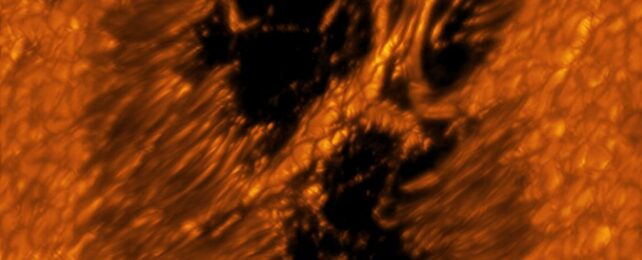The largest and most powerful solar telescope on Earth has just given us breathtaking new views of the surface of the Sun.
In a series of new images, the Daniel K. Inouye Solar Telescope's observations reveal the intricate details of sunspot regions, the roiling convective cells, and the motion of plasma in the solar atmosphere down to a resolution of around 20 kilometers (roughly 12 miles).
At these scales, the plasma structures look like brushstrokes and textures on a painting. To the distances into context, a single solar convection cell is just a little smaller, on average, than the US state of Texas.
These new Inouye images, however, are not designed just to make you feel tiny and insignificant, they're a sneak preview of the science to come, as researchers analyze the solar surface in exquisite detail to understand the processes that take place thereon.
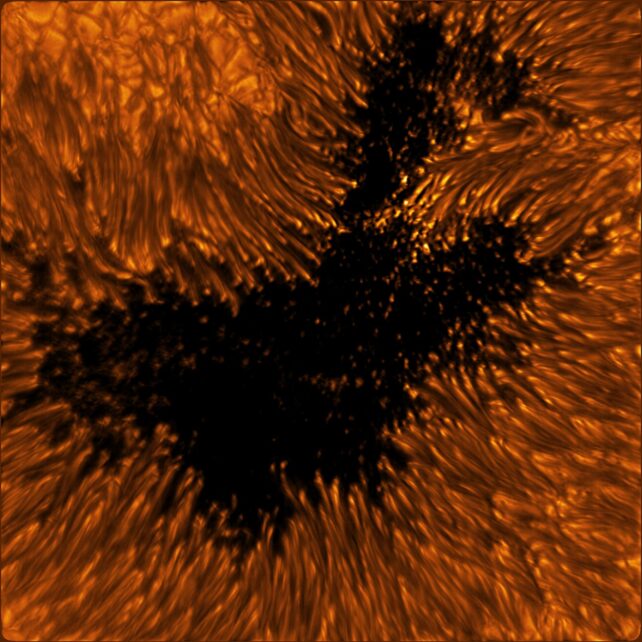
Often bigger than our entire planet, sunspots are typically short-lived blemishes where magnetic fields are unusually powerful, appearing darker than the surrounding regions thanks to their relatively lower temperatures. They're also associated with our Sun's more violent outbursts: as magnetic field lines tangle, snap, and reconnect, they unleash incredible outbursts of energy in the form of coronal mass ejections and solar flares.
Sunspot activity isn't constant. It's tied to cycles of roughly 11 years, during which sunspot and flare activity rises to a peak at solar maximum, and falls to almost nothing during solar minimum. At solar maximum, the Sun's poles switch places; we're currently on the path to a solar maximum expected to take place in 2025, after which solar activity will start to subside once again.
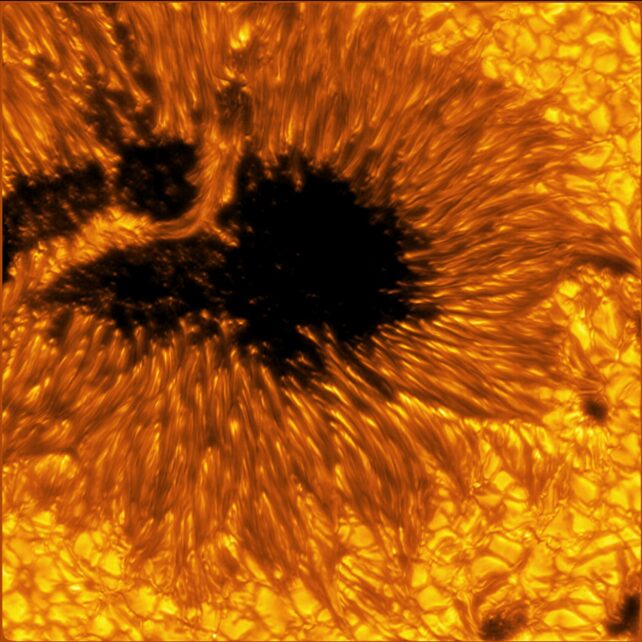
It's not known what drives these solar cycles, or what creates the sunspots. But this information is of great relevance to us here on Earth, since the coronal mass ejections often associated with sunspots can send out massive clouds of charged particles that slam into Earth's magnetic field and risk a number of disruptions to our technologically-reliant way of life.
The new Inouye images showcase several fine structures associated with sunspots.
For example, there's the umbra (that's the dark spots in the middle). Bright patches seen within the umbra are known as umbral dots. The penumbra is the brighter region around the umbra. This is characterized by bright strands known as penumbral filaments.
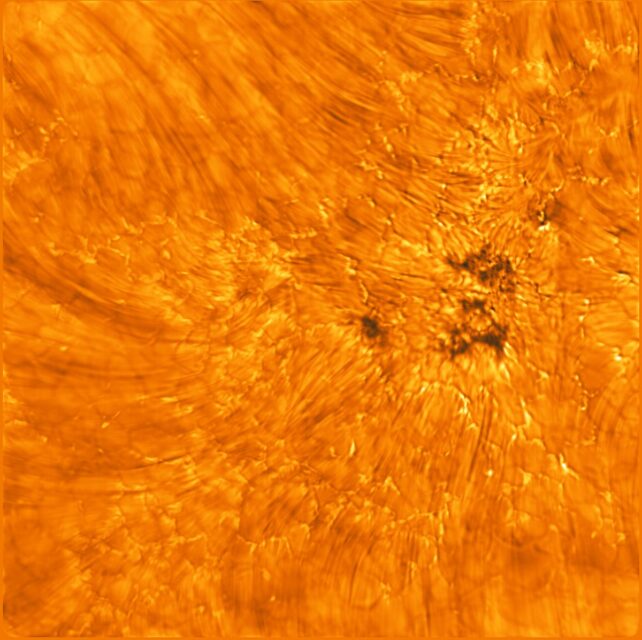
Occasionally, a sunspot-like region of concentrated magnetic field that has an umbra but no peripheral penumbra can be seen. These are known as solar pores; they form when the conditions aren't met for the formation of a penumbra.
And, as a sunspot starts to decay and disappear, it can be crossed by light bridges. Further decay sees the sunspot lose its penumbra; it's very rare to capture the process of this loss.
When the Sun is quiet, it can appear quite featureless in images captured in the visible part of the spectrum.
However, even a quiet Sun has a lot going on. Convection cells, as seen below, give the solar surface, or photosphere, its "popcorn" texture. Hot plasma rises from within the center of the cell, then travels out to the edges, falling back down as it cools. These convection cells, or granules, are staggeringly huge, up to 1,600 kilometers (994 miles) across.
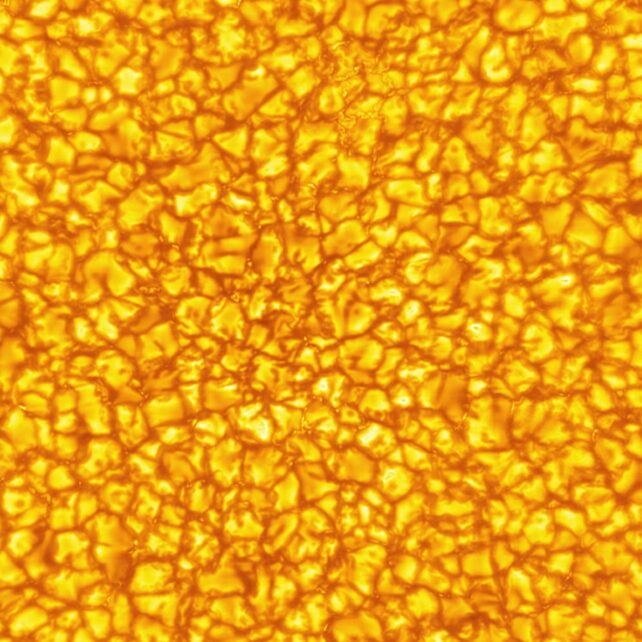
Above the photosphere is the solar atmosphere, or chromosphere. It's sometimes populated by fine, dark, brushstroke-like threads of plasma known as fibrils or spicules. They look like hairs, but fibril diameters commonly range between 200 and 450 kilometers (125 to 280 miles). They erupt from the photosphere and last for a few minutes. Scientists don't know how the fibrils are generated, but there are certainly a lot of them, and they're pretty reliable indicators of the directions of the messy solar magnetic field.
Data from Inouye will, scientists hope, help unravel some of the lingering mysteries of these fascinating solar phenomena. In turn, that could aid in understanding larger phenomena; the internal dynamics of the Sun, for example, and what drives the solar cycles.
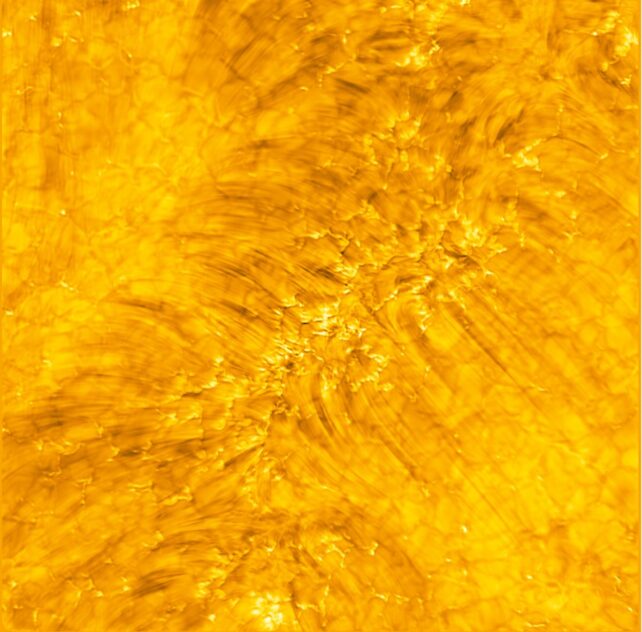
Already the telescope is delivering results. Earlier this year, scientists described the first-ever observations of solar atmospheric waves in a sunspot.
"There is no other facility like the Inouye Solar Telescope," astronomer Thomas Rimmele, director of the Inouye Solar Telescope, said last year. "It is now the cornerstone of our mission to advance our knowledge of the Sun by providing forefront observational opportunities to the research community. It is a game changer."
You can view and download full-resolution versions of the new images on the National Science Foundation website.
